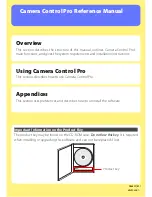
Authenticating Users
ExtremeWare 7.2e Installation and User Guide
63
To display the association between parameter names and filter profiles, use the following command:
show snmpv3 filter-profile {{hex} <profile name>} {param {hex} <param name>}
To display the filters that belong a filter profile, use the following command:
show snmpv3 filter {{hex} <profile name> {{subtree} <object identifier>}
To delete a filter or all filters from a filter profile, use the following command:
configure snmpv3 delete filter [all | [{hex} <profile name> {subtree <object
identifier>}]]
To remove the association of a filter profile or all filter profiles with a parameter name, use the
following command:
configure snmpv3 delete filter-profile [all |[{hex}<profile name> {param {hex}<param
name>}]]
Notification Tags
When you create a target address, you associate a list of notification tags with the target, or by default,
the defaultNotify tag is associated with the target. When notifications are generated, only targets
associated with tags currently in an internal structure, called snmpNotifyTable, will be notified. To add an
entry to the table, use the following command:
configure snmpv3 add notify {hex} <notify name> tag {hex} <tag> {volatile}
Any targets associated with tags in the snmpNotifyTable will be notified, based on the filter profile
associated with the target.
To display the notifications that are set, use the following command:
show snmpv3 notify {{hex} <notify name>}
To delete an entry from the snmpNotifyTable, use the following command:
configure snmpv3 delete notify [{{hex} <notify name>} | all-non-defaults]
You cannot delete the default entry from the table, so any targets configured with the defaultNotify tag
will always receive notifications consistent with any filter profile specified.
Configuring Notifications
Since the target parameters name is used to point to a number of objects used for notifications,
configure the target parameter name entry first. You can then configure the target address, filter profiles
and filters, and any necessary notification tags.
Authenticating Users
ExtremeWare provides two methods to authenticate users who login to the switch:
•
RADIUS client
•
Содержание ExtremeWare 7.2e
Страница 14: ...14 ExtremeWare 7 2 0 Software User Guide Contents...
Страница 18: ...18 ExtremeWare 7 2e Installation and User Guide Preface...
Страница 46: ...46 ExtremeWare 7 2e Installation and User Guide Summit 400 48t Switch Overview and Installation...
Страница 80: ...80 ExtremeWare 7 2e Installation and User Guide Accessing the Switch...
Страница 102: ...102 ExtremeWare 7 2e Installation and User Guide Virtual LANs VLANs...
Страница 108: ...108 ExtremeWare 7 2e Installation and User Guide Forwarding Database FDB...
Страница 180: ...180 ExtremeWare 7 2e Installation and User Guide Security...
Страница 194: ...194 ExtremeWare 7 2e Installation and User Guide Ethernet Automatic Protection Switching...
Страница 218: ...218 ExtremeWare 7 2e Installation and User Guide Spanning Tree Protocol STP...
Страница 248: ...248 ExtremeWare 7 2e Installation and User Guide Interior Gateway Protocols...
Страница 256: ...256 ExtremeWare 7 2e Installation and User Guide IP Multicast Routing...
Страница 308: ...308 ExtremeWare 7 2e Installation and User Guide Using ExtremeWare Vista on the Summit 400...
Страница 316: ...316 ExtremeWare 7 2e Installation and User Guide Technical Specifications...
Страница 324: ...324 ExtremeWare 7 2e Installation and User Guide Software Upgrade and Boot Options...
















































